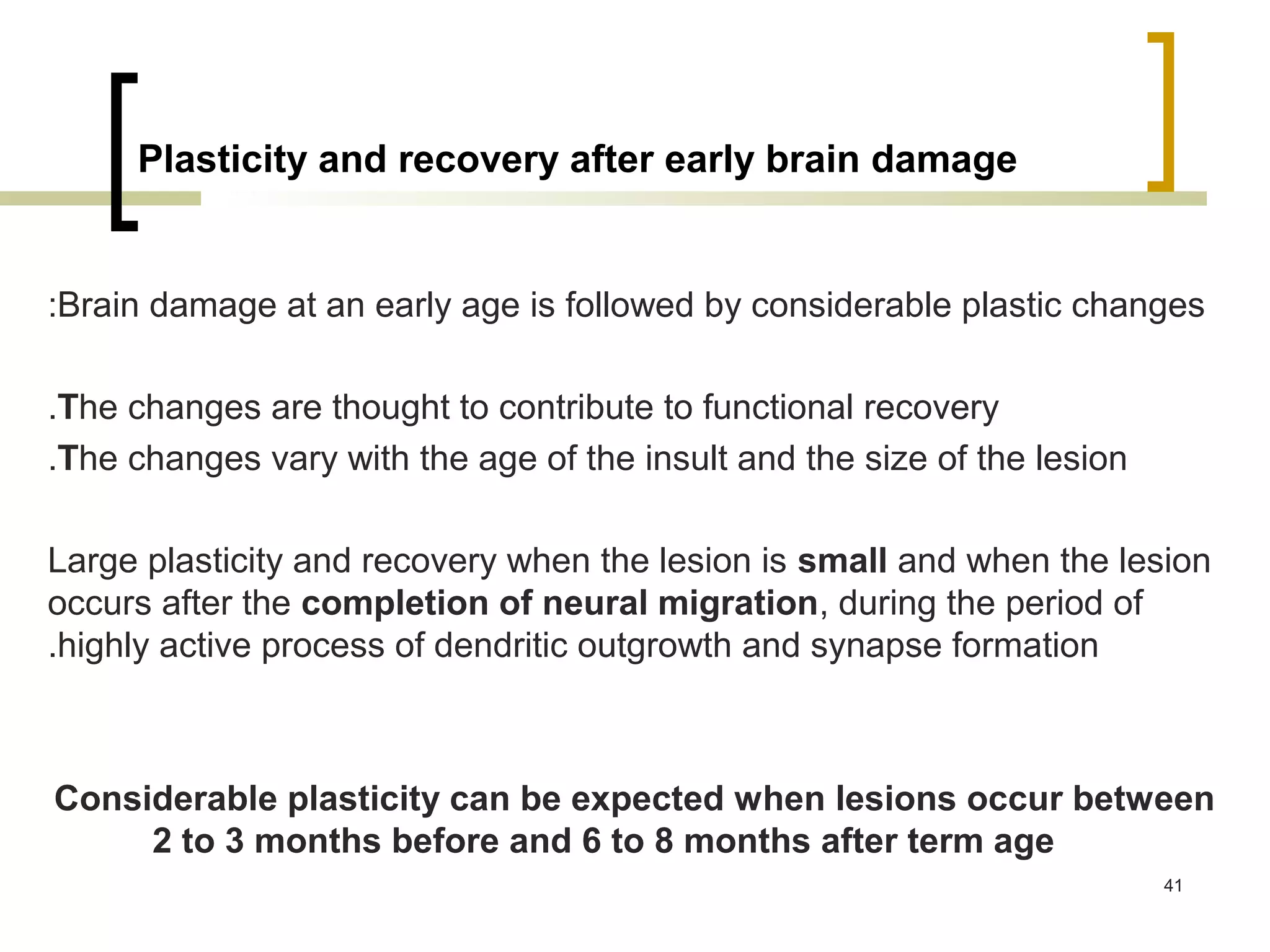The document discusses the neuronal group selection theory (NGST) as a framework for understanding and treating motor development disorders in children. It outlines various theories of motor development, emphasizing the roles of genetic, experiential, and environmental factors in shaping motor behavior. The document also provides insights into intervention strategies aimed at improving motor function, particularly following early brain injuries.
















































